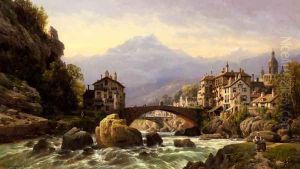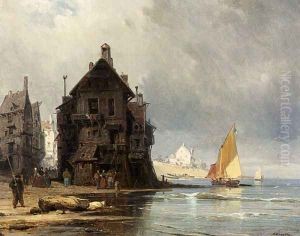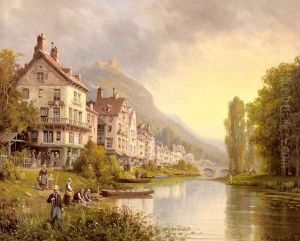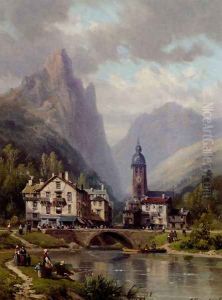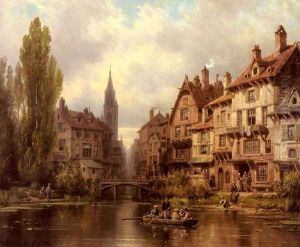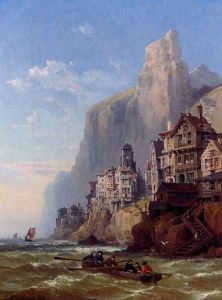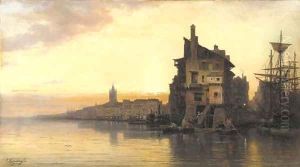Charles Euphrasie Kuwasseg, Jr. Paintings
Charles Euphrasie Kuwasseg Jr. was a French artist born on March 18, 1838, in Draveil, a suburb of Paris. He was the son of Charles Euphrasie Kuwasseg Sr., who was also a painter, thus growing up in an environment that was conducive to nurturing his artistic talents. Despite the 'Jr.' suffix, he is most commonly known as Charles Euphrasie Kuwasseg, without distinction from his father.
Kuwasseg Jr. is best known for his landscapes and marine paintings, which exhibit a Romantic style that was prevalent during the mid-19th century. His work often depicted the beauty of the French countryside, coastal scenes, and occasionally views of other European locations. He was particularly adept at capturing the play of light on water and the atmospheric conditions of the rural settings he painted.
He received his initial training from his father and later studied under the guidance of Jean-Baptiste Camille Corot, a leading figure in the Barbizon school of France who had a significant impact on the impressionists. Under Corot's mentorship, Kuwasseg honed his skills and developed his own unique approach to landscape painting.
During his career, Kuwasseg exhibited at the Paris Salon, the official art exhibition of the Académie des Beaux-Arts in Paris, where he gained recognition for his work. He also traveled around Europe, which influenced his artistic style, as seen in the variety of landscapes he painted.
Kuwasseg's works were well-received and collected during his lifetime, and they continue to be appreciated by collectors and art enthusiasts. He is considered part of the second generation of French landscape painters, contributing to the transition from Romanticism to Impressionism, although he remained closer in style to the former.
Charles Euphrasie Kuwasseg Jr. passed away on October 27, 1904, leaving behind a legacy of picturesque landscapes that continue to capture the essence of 19th-century French painting. Despite not being as widely known as some of his contemporaries, Kuwasseg's work offers a valuable glimpse into the evolution of landscape art in France during a period of significant artistic development.
